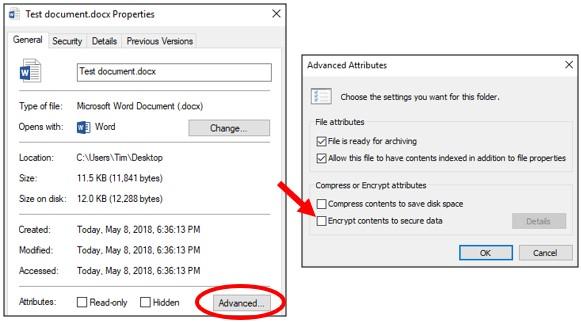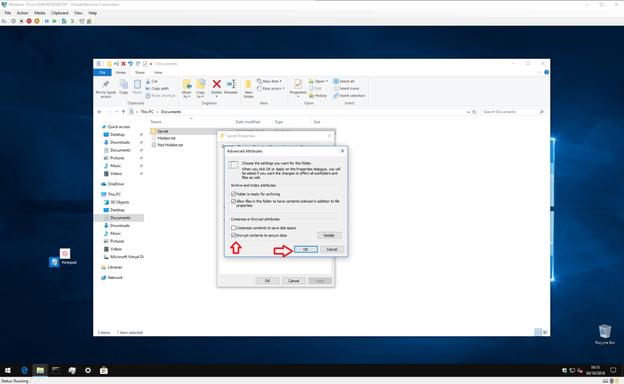
Lock a folder or file: How to password protect folders and files on Windows laptop/PCs
Your Windows laptop/ PC allows you to lock a folder or file. Whether you are using Windows 7/8/10/11, there is an option to password-protect your important documents. This ensures no one else, other than you, can access the content of the file/ folder. If you are looking to lock a folder or file on your laptop/ PC, we are here to help. There are several ways for you to do this depending on the version of Microsoft Windows your computer is running. But, before we get into how you can password-protect your files and folders using different ways, let’s elaborate on why you need to do so.
Table of Contents
Why password protect files?
If you share your PC or laptop with other people, say your family members, they’ll be able to see anything and everything you have on it including confidential or private stuff. Plus, there will always be a chance of human error: someone might delete or modify a file by mistake or accidentally share a private folder. Therefore, it is better to password-protect certain folders and files so that unwanted visitors can’t access them.
How to lock a folder or file in Windows 7,8, 10 or 11?
Most of the Windows versions come with a built-in file encryption system that allows you to password-protect your confidential files and folders and keep them safe from prying eyes. In addition, there are several third-party software as well, which help ensure that your privacy isn’t compromised.
Read on to know more about different tools that can help you lock a folder/file in Windows 7,8, 10 or 11.
The best way to secure your folders (and files within them) against unauthorised individuals is the Windows built-in encryption feature, BitLocker. It allows you to encrypt your folder to make it accessible only via your Windows user account and password.
Follow the steps given below to lock a folder or file using the encryption tool in Windows 7, 8, 10 and 11:

Note: BitLocker works on all the versions of Windows 7,8, 10 and 11 – except for Windows 7 Home Premium and Windows 10 Home. If you’re using them, refer to the next point.
Also ReadScreen recorder for PC: How to record screen on Windows 10, 11 laptops and Mac
Windows 11 download: How to download Windows 11 stable version on your PC/ laptop
Windows 11 Screenshot: Easy step-by-step guide on how to take screenshots on Windows 11 PC/ laptop
Another easier way of locking a folder or file is to compress and protect it with a password using compression tools like 7-Zip (free), WinRAR (free) or WinZip (free trial). This is a great solution for you if your Windows version does not have built-in encryption.
Just install any of the above-mentioned programs on your PC or laptop and then retrace the following steps:
There are several third-party software also available that allow you to safeguard your data with rather advanced methods. Unlike the other two methods, password-protection using third-party tools restricts access to a folder/file, regardless of the logged-in user.
Some of the most prominent third-party tools available for locking a file/folder in Windows 7,8, 10 or 11 are:
Note: If you opt to use third-party software, make sure you download it from a reputable source
Tips for securing your locked folders
In order to keep your system secured with the strongest defences, it is certainly important to password protect your files and folders. But, that’s not all. You also need to ensure that your passwords are safe.
Here are a few tips that can help ensure the security of your locked (password-protected) folders and files:
Ever thought about what might happen if you forgot or lost the password to your locked folder or file? There is also the possibility of your encryption software getting corrupted and the files getting lost. Hence, it is extremely important that you back up your data regularly. You can use Microsoft’s OneDrive, Google Drive, or other cloud-based data backup solutions to be on the safer side. Using a password manager can also ensure that all your login credentials are safe and secure.
Regardless of the method you choose to lock your confidential folders and files, the key is to set up a strong, secure password. A weak, uninventive and easy to remember password will not be able to protect your device against potential data theft, hacking, or other such brute force attacks.
Follow these tips to ensure that the password to your confidential folder or file is strong and impregnable:
Note: Use a password strength checker to ensure that you’ve chosen a strong password
FAQs
To begin with, you must be logged into your Windows user account to access the locked folder. You also need the password to it. Simply double-click the locked folder, and enter the password you have set. In case you have encrypted the contents of the folder, you’ll need the password to access them as well.
Most Windows versions have a built-in feature to hide files and folders so that they don’t appear in the directory and can’t be accessed by unwanted visitors. Follow these steps to hide a folder on your PC:
[Previous Story]Xiaomi 11T Pro vs Vivo V23 Pro: real-life comparison[Next Story]Tecno Camon 18, POVA Neo, Spark 8T, and Spark 8 Pro get up to 5GB virtual RAM with new updateSonal Choudhary}})